Training for Hiking: A Plan For Longer Distance Hikes
This article may contain affiliate links where I make a small commission for purchases you make from links that you click from this article. By purchasing through these links, you support me at no additional cost to you. Thanks for your support.
In an effort to bring you some new voices on Ottsworld, here is a guest post from a fellow hiker, Becki Rupp. I met her in Denver at the Travel and Adventure show. Not only is she a travel lover, but she’s also a trainer focusing on health coaching for active experiences. I asked if she could share a hiking training plan for long-distance hiking, and she eagerly agreed! I love all of her advice, which is great for hiking or any kind of active travel! All opinions and experiences expressed here are hers. –Sherry
As I flesh out my “60 by 60” list, it’s loaded with destinations and activities. Many are longer hikes and treks than I typically do in the mountains that are literally in my backyard in central Colorado.
Does your version of the Bucket List include at least one multi-day hiking adventure or trek? Maybe the Camino de Santiago – I finished it in 2022! Or the Inca Trail – I completed the “Classic” 4-day version in 2013 with my husband. Or do you dream about hiking the West Highland Way in Scotland, the W Circuit in Patagonia, or Kilimanjaro in Tanzania – the list is practically endless!
Table of Contents
Importance of Training for Hiking
Part of what I love about travel is planning how to prepare for a hike—how many miles I need to hike each week, how many rest days I need, what other training I should do, and what to pack and carry with me based on the terrain and weather.
I’ve always been a planner and an exercise junkie. Now, as a personal trainer and health coach, and as I’ve gotten older, I have an even better understanding of and respect for the importance of pre-trip training for hiking. Physical preparation is crucial, especially for long-distance hikes, and involves a well-rounded conditioning schedule.
Most of us spend our 20s through our 50s working in an office so we can have a house and nice (if short) vacations and save for retirement. Then as we get into our 40s and 50s, we start to realize that it gets harder to do the things that we used to just go out and do in our 20s.
Go on a 5-mile hike – sure, that was a bit of a challenge in my 20s after a winter break from walks in the woods. I’d be a bit tired by the end and a little sore the next day.
Find out why Lake Lucerne is the ultimate outdoor destination in Switzerland
Now, on that first spring hike, by mile 3 or 4, my left knee will say, “You’re done, girl; I hope you aren’t too far from the car.” I know I need to train for a big hike gradually and thoughtfully.
I’ve also gained a greater appreciation for strength training. I’d much rather be outside running or hiking on a beautiful day than in a gym with dumbbells. Yet my kinesiology education emphasized the importance of workouts for hikers and strength training as we age.
I don’t want to be frail and fearful of falling. I want to stay strong to travel and live independently for as long as possible.
Sound familiar? If so, and you want to get ready for a Bucket List hiking trip, here’s how to start training for hiking and gain momentum toward your hiking goal.
Getting Re-Started Hiking
Let’s say it’s been a minute since your last hike – or maybe you haven’t really hiked before. It’s still totally doable to gear up for a long trek if you have the time and the motivation.
If the hike you want to do is more than 2 days and more than 20 miles total, and you’re not currently exercising regularly, you should start training for hiking at least 3 months before the trip.
The key is to start small and slow, then increase your activity gradually. If you’ve been less mobile because of an illness or injury, check with your doctor, athletic trainer, or physical therapist before doing more than you’re used to. Ask how far you should walk or hike to start and other health considerations.
Consider the elevation gain of your planned hikes, as it significantly impacts the intensity and requires specific conditioning. Understanding altitude sickness and its symptoms is essential for high-elevation hikes to ensure safety and preparedness.
Look for short hikes in your area, and add about 5-10% to the distance or time as you get more comfortable. You can use a pedometer app like Pacer Pedometer or StepsApp on your phone or a fitness tracker/watch to gauge the distance.
How to Find Training Hikes in Your Area
To find nearby trails, check out sites like AllTrails and apps like Hiking Project. They show detailed information about trails and include reviews from people who have hiked them. You can also check with your local parks and recreation department. Or stop by a store that sells outdoor clothing and gear and ask one of the employees.
What to Bring on Your Training Hikes
Even when you’re doing a short-distance training hike, get in the habit of bringing a backpack with at least a bottle of water and some snacks. Also, bring a map – paper and/or electronic (phone apps like Google Maps, Gaia, or Maps.me show trails) – to get used to how trails look in 2D compared with how they look while you’re walking.
This is my 'go-to' day pack for hiking. It's got a great hip belt and support. It comes with a rain cover - no need to buy it separately! My favorite feature is the Stow and Go Trekking Pole functionality - you can store and easily get out your hiking poles without taking off your pack! Big water bottle holders and space for a water bladder! The perfect pack!
Also, consider using trekking poles, especially if you’ve had a knee injury. I’ve used trekking poles since my mid-20s. It all started with an event called the Dogwood Half-Hundred, which was a 50-kilometer hike (32 miles) in Virginia’s Shenandoah mountains.
One Pair (2 Poles) - Ultra Light, Quick Locking, and Ultra Durable
These are a great budget option for hiking poles.
Don’t Leave Without This Essential Gear
I’ve hiked all around the world and have found some key gear that I take on every hike for every kind of weather. From backpacks to socks, check out my hiking packing list, which is full of the best hiking gear out there!
Although I’d done a lot of hiking training, my left knee has never been the same since. For a month afterward, I had knee pain anytime I walked downstairs or downhill. I remember thinking, “Wait, I need to use my knees for at least 50 more years!”
My doctor recommended some exercises to build the muscle groups that support the knee joint – which I should have done beforehand. She also suggested using trekking poles. My parents got me a pair for Christmas that year, and I’ve been using them ever since.
Things to Include in Your Hiking Endurance Training Program
Building Leg Muscles For Hiking
As you do more hiking, your large leg muscles – quadriceps, hamstrings, and calves – will get stronger. That said, doing specific strength-building exercises with your legs will help you be more stable and less tired on longer hikes.
One effective exercise that builds leg muscles for hiking is step-ups, which are exactly what they sound like – simply stepping up on stairs or a bench. You can start with a single step and alternate legs. Then, use a longer staircase to go up and down – actually, the down is as important as the up.
Also, step up sideways – that strengthens the muscles and will help you be more stable on uneven ground when you’re hiking.
If you don’t take stairs much currently, here’s a good starting point:
• 20 steps up and down on each leg
• 10 side steps up on each leg
• At least two times per week
• Add 5 steps up and down and 2 side steps on each leg each week
Once you’re comfortable doing 50 or so step-ups or stairs with each leg, get your backpack, put some weight in it, and climb stairs wearing it.
Then, take the steps two at a time – up, down, and side-stepping – to get ready for the steep sections and rocks you’ll likely encounter on hiking trails.
Strengthening Your Core Muscles for Hiking
Strong core muscles are key to happy hiking! As you hike, you’ll be twisting, leaning, and using the muscles in your abs and back to keep you upright. And when you’re wearing a backpack – even if it’s fairly light and comfortable – you’re adding weight that increases the torque on your core as you move.
Core strength will help keep you stable when you’re on uneven terrain – it compensates for your feet and legs being in unusual positions and your upper body’s instinctive responses to stay upright.
No need for six-pack abs, though – you just need the muscles from your hips to your chest to be strong and flexible in every direction.
An effective exercise to build core strength is by holding a plank position for an increasing amount of time.
You can start by doing a plank variation against a wall. Then you can progress to the floor: your starting position is knees on the ground, working your way up to being on your forearms and toes. Keep your abdominal muscles tight and tailbone tucked; don’t let your lower back arch.
Hold the plank with good form for as long as you can – aim for 30 seconds to start – then add a few more seconds each time to get to 1 minute. Plank once a day – or more!
Check out my hiking packing list – essential gear for every hike
Strengthening your oblique muscles, which run along the sides of your lower torso, is important, too. This will help as you bend and twist when you’re hiking on uneven ground and also as you’re putting on and taking off a backpack.
One simple exercise is side twists. Sit in a chair and hold a weight in front of you with your upper arms at your sides and elbows bent at 45 degrees. Turn your torso at your waist as if you were going to pass the weight to someone next to you, then turn back to the middle, and then turn to the other side. Progress this by lifting one or both feet, with knees bent or legs straight.
Core workout for Hiking:
- Plank for 30-60 seconds at least once a day
- Side twists – start with 10 per side once a day, add 2-5 more per side per week
Don’t Forget Your Upper Body Training
While your legs and core will get stronger as you do more walking or trail running, your upper body needs special attention. Your chest, back, and shoulders will be holding the additional weight of your backpack, and you’ll use your biceps and triceps to lift the pack.
If you use trekking poles, which I highly recommend, a stronger upper body will help you use them to take pressure off your hips and knees.
One of the most efficient exercises for building upper body strength is good old-fashioned push-ups. Similar to the plank variation, you can start by doing them against the wall in a standing position. Then move to the floor with your knees on the ground and do as many as you can. As you get stronger, lift one knee and then both knees so you’re on your hands and toes.
You can also use your backpack to strengthen your arms and back. Put in a few soup cans to start. Bend your knees, keep your chest up, and grab the top of the shoulder straps. As you stand, lift the pack up in front of you to about chest height, then lower it back down to the ground.
You should have enough weight in the backpack that your arms get tired after 10-12 lifts. If you are comfortable lifting it 15 times, add 2-3 more cans the next time. Keep adding more weight until you get to the point where your arms are tired after 10 lifts.
You should have enough weight in the backpack that your arms get tired after 10-12 lifts. If you are comfortable lifting it 15 times, add 2-3 more cans the next time. Keep adding more weight until you get to the point where your arms are tired after ten lifts.
Upper body Hiking workout:
- Push-ups – 10-15 every other day
- Pack lifts – 10-15 every other day
Check out Becki’s YouTube channel for other ideas for using stuff around your house to exercise!
Improving Balance and Flexibility for Hiking on Uneven Terrain
As you build endurance and strength for hiking, also dedicate time to work on balance and flexibility.
Better balance reduces your risk of injury while hiking. When you practice maintaining balance regularly in your “normal” conditions, you’ll be better equipped to deal with unstable surfaces, uneven terrain, and unexpected movements, like a rock shifting under your shoe.
Balance exercises help you build the smaller muscles and tendons that surround and stabilize your larger muscle groups and joints. If I’d done more balance exercises before that 50k hike, my knee joint may not have gotten so irritated and damaged.
A simple way to improve balance is to stand on one foot on a variety of surfaces – carpet, concrete, grass, dirt, gravel, and rocks. Also, do this on a hill – facing uphill and downhill. Aim for 30 seconds per leg to start, and work up to 60 seconds. Notice which foot or side feels more stable. Then put on your pack and do it.
Add time to your balance routine gradually. Spend extra time practicing balance on your weaker side.
Finally, don’t forget about flexibility. When you’re more flexible, it’s easier to reach that awkward step or handhold as you navigate more challenging terrain. And you’re less likely to strain your muscles doing those moves.
Yoga and Pilates help with both flexibility and balance in hiking, plus many of the common moves in these practices strengthen and tone muscles. Find a studio with qualified instructors, especially if you’re new to these practices.
6-Week Training Plan for Hiking
Below is a good hiking training plan for beginners. One of the basic principles for training is to add more effort gradually – about 10-20% additional per week. When training for hiking, additional effort can mean more miles and/or steeper hills. For strength training, additional effort can be a combination of more repetitions or time and additional weight used.
Here are the first 6-weeks of a hiking or backpacking trip training plan for a person who is generally healthy, though not exercising regularly, who wants to complete a 3-day, 20-mile hut-to-hut hike carrying a day pack with moderate elevation changes (no more than 1,000 feet per day) in 3 months:
Strategies For Your Hiking Training Plan
If training for hiking sounds like a lot to add to your already busy life, find creative strategies for multitasking.
- Stand on one foot while you’re brushing your teeth. Then, balance on the other leg while flossing.
- Hold a plank while you’re watching your favorite show or reading a book.
- Take the stairs instead of the elevator at the office or while doing errands.
- Take your dog for an extra-long walk. If you don’t have a dog, walk a neighbor’s pup.
- If you’re struggling with confidence, tap into some mindset strategies for mental toughness.
- Reflect on challenges that you’ve conquered in the past. What helped you do them?
- Are you good at following a structured plan? If so, set up a plan and plug it into your calendar.
- Are you more likely to exercise if you’re with a friend or when someone else schedules the activity? Then, recruit a friend or find a group in your area to get out with for a hike.
- Use visualization, too – imagine yourself climbing the hills, seeing the amazing views you’ll see, and feeling strong.
And remember to take it one step at a time – literally and figuratively.
Essential hiking gear for any hike
-
$99Buy Now
I love these pants!! They're great for fall/spring, are stretchy, but water resistant, with great pockets! I love the stretchy waist band as it fits me without having to use a belt.
I earn a commission if you click this link and make a purchase, at no additional cost to you.
-
$171.57AMazon REI
This is my 'go-to' day pack for hiking. It's got a great hip belt and support. It comes with a rain cover - no need to buy it separately! My favorite feature is the Stow and Go Trekking Pole functionality - you can store and easily get out your hiking poles without taking off your pack! Big water bottle holders and space for a water bladder! The perfect pack!
I earn a commission if you click this link and make a purchase, at no additional cost to you.
05/25/2025 12:48 pm GMT -
$190.00REI.com Amazon
My favorite hiking boot. I have hiked with them all over the world. Rugged boots with great footbed support. Sole is great for rocky trails, and the color is pretty cute too! Great for hard hikes and thru hikes.
I earn a commission if you click this link and make a purchase, at no additional cost to you.
-
$119.00Buy Now
I don't go on a trip without this harness! It allows me to be hands free when hiking and snowshoeing. I've also used it while horseback riding. It has saved my neck and back and it a secure, healthy way to carry my camera!
10% off coupon code for readers - OTTSWORLD
I earn a commission if you click this link and make a purchase, at no additional cost to you.
-
$89.95Buy Now
One Pair (2 Poles) - Ultra Light, Quick Locking, and Ultra Durable
These are a great budget option for hiking poles.
I earn a commission if you click this link and make a purchase, at no additional cost to you.
05/24/2025 07:17 pm GMT
Pin it for later!

Meet the Author:
Becki Rupp is the owner of Trailblazer Wellness, which exists to help people get more physically active, so they have the strength and stamina to enjoy the experiences they’ve dreamed of having. Visit Trailblazerwellness.com to learn more, check out the Trailblazer Wellness Facebook page or contact Becki at becki@trailblazerwellness.com.
© 2020, Trailblazer Wellness, LLC.
Content created by Becki Rupp and Trailblazer Wellness, LLC, is for informational purposes only and may not be the best fit for you and your personal situation. Information included in these posts shall not be construed as medical advice. The information and education provided here is not intended or implied to supplement or replace professional medical treatment, advice, and/or diagnosis. Always check with your own physician or medical professional before trying or implementing any information read in our blog posts.

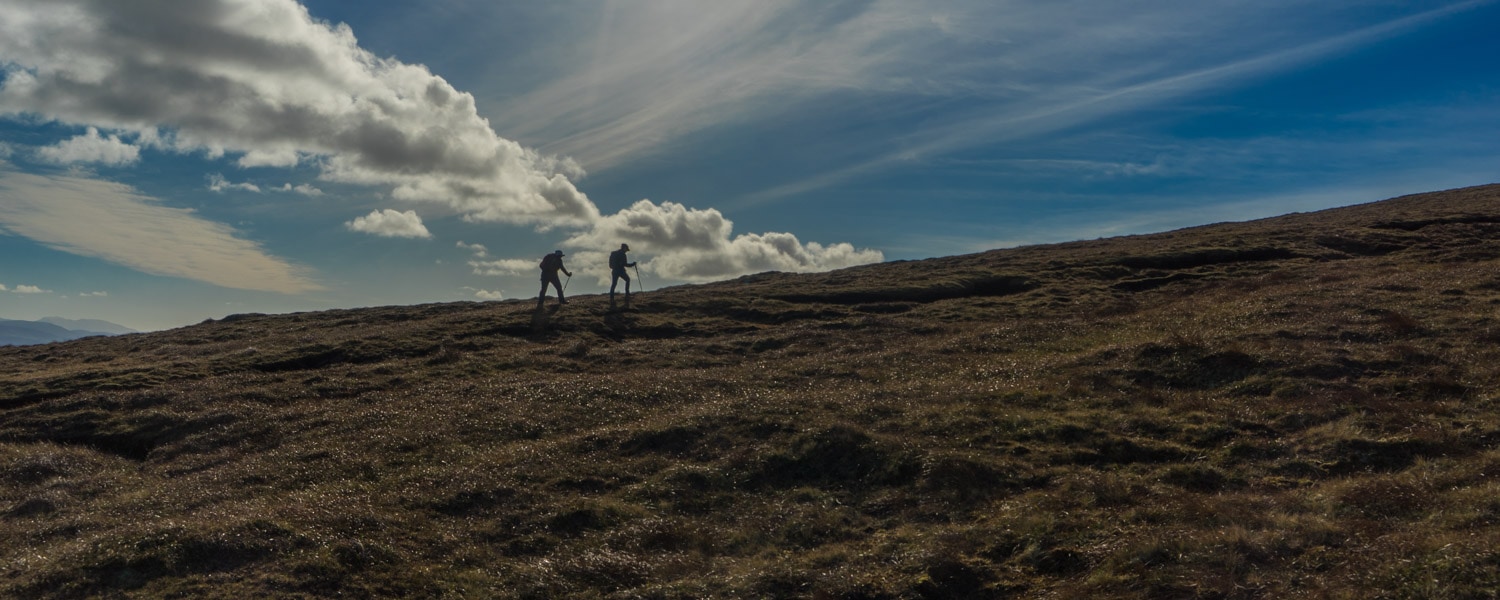
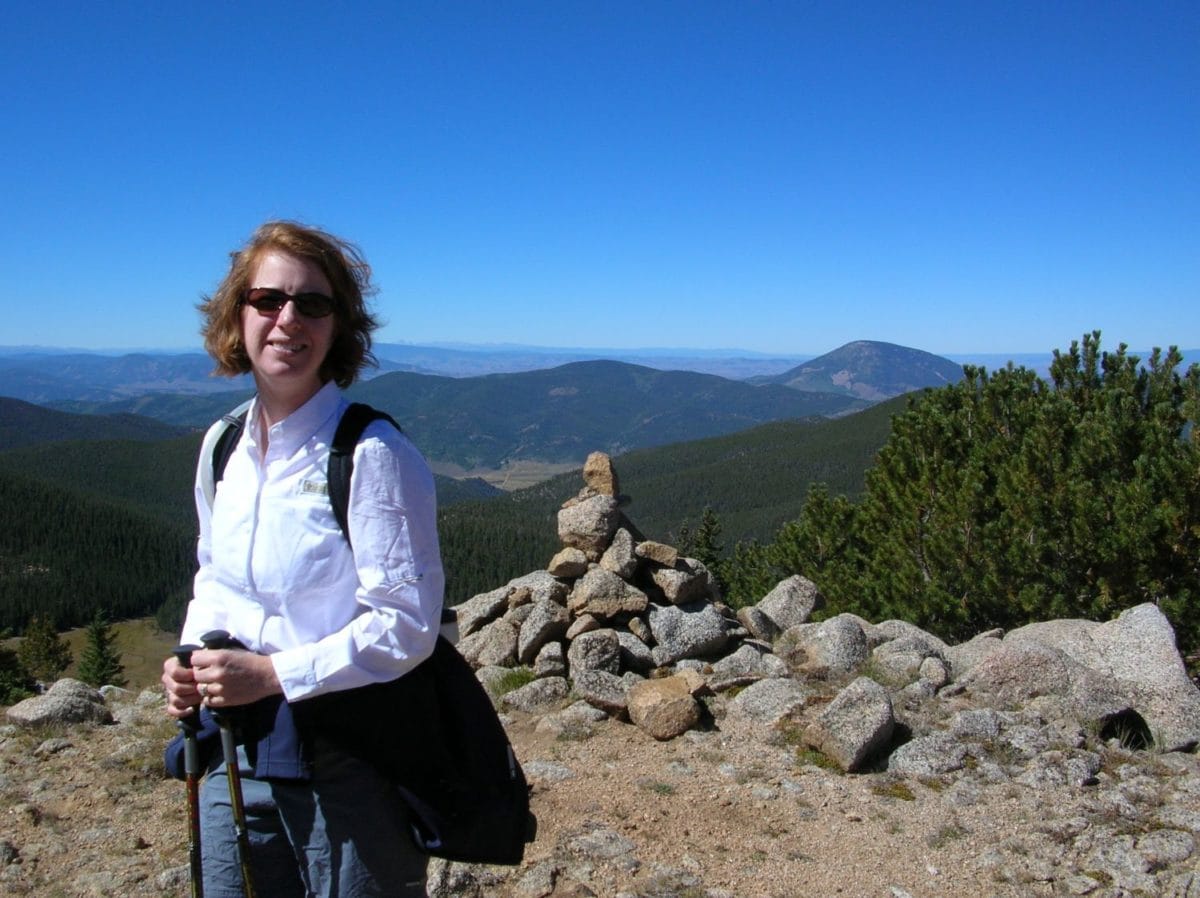
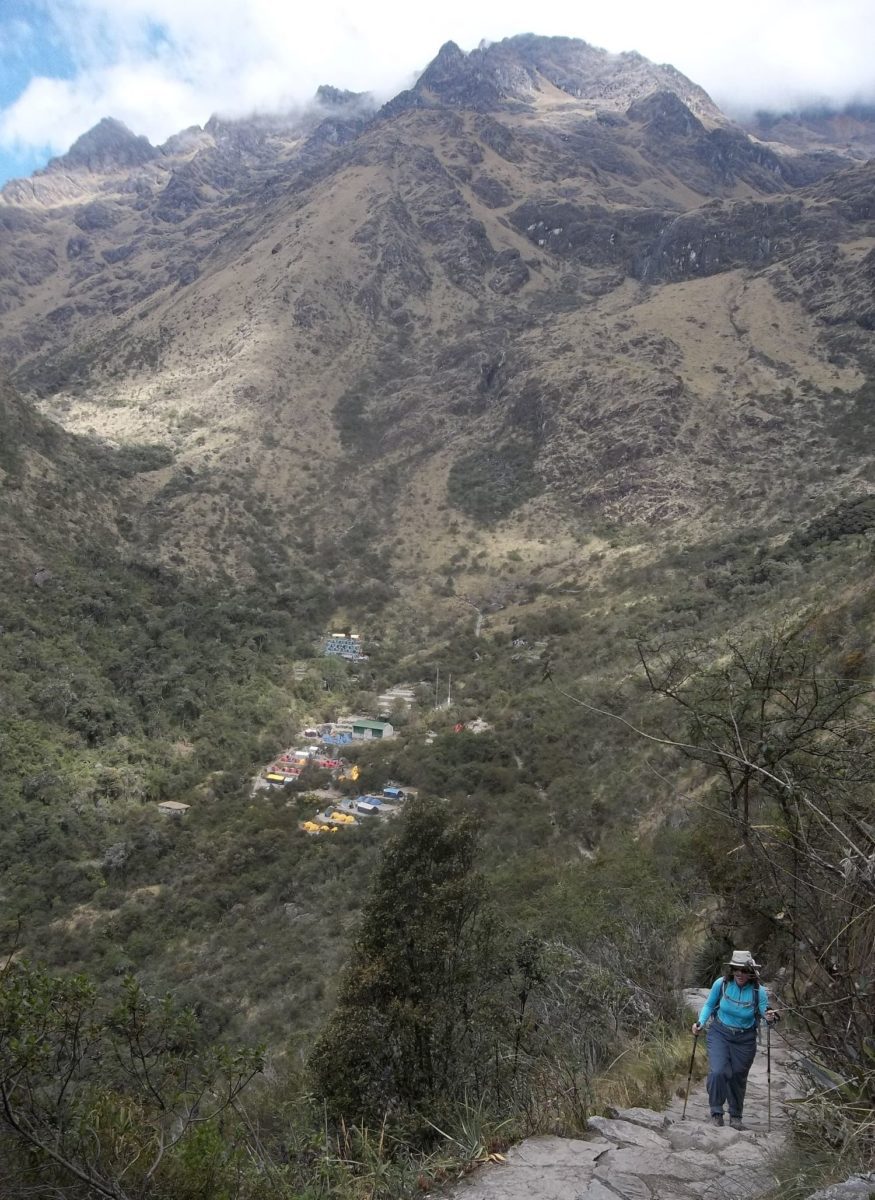
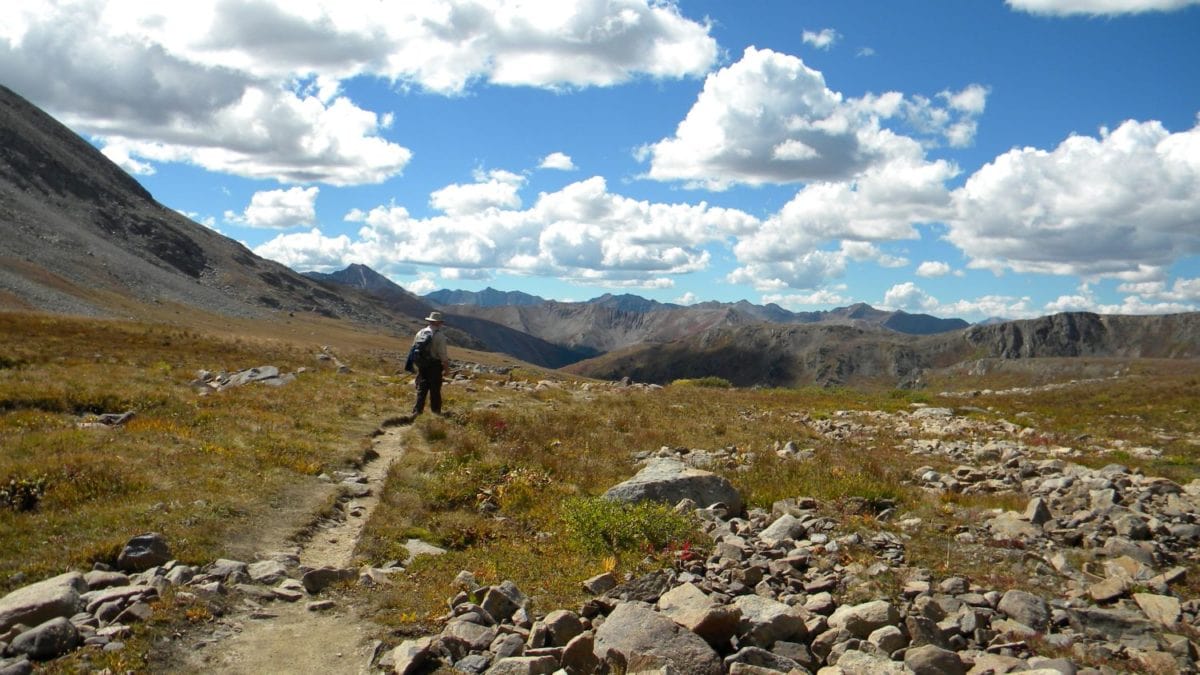


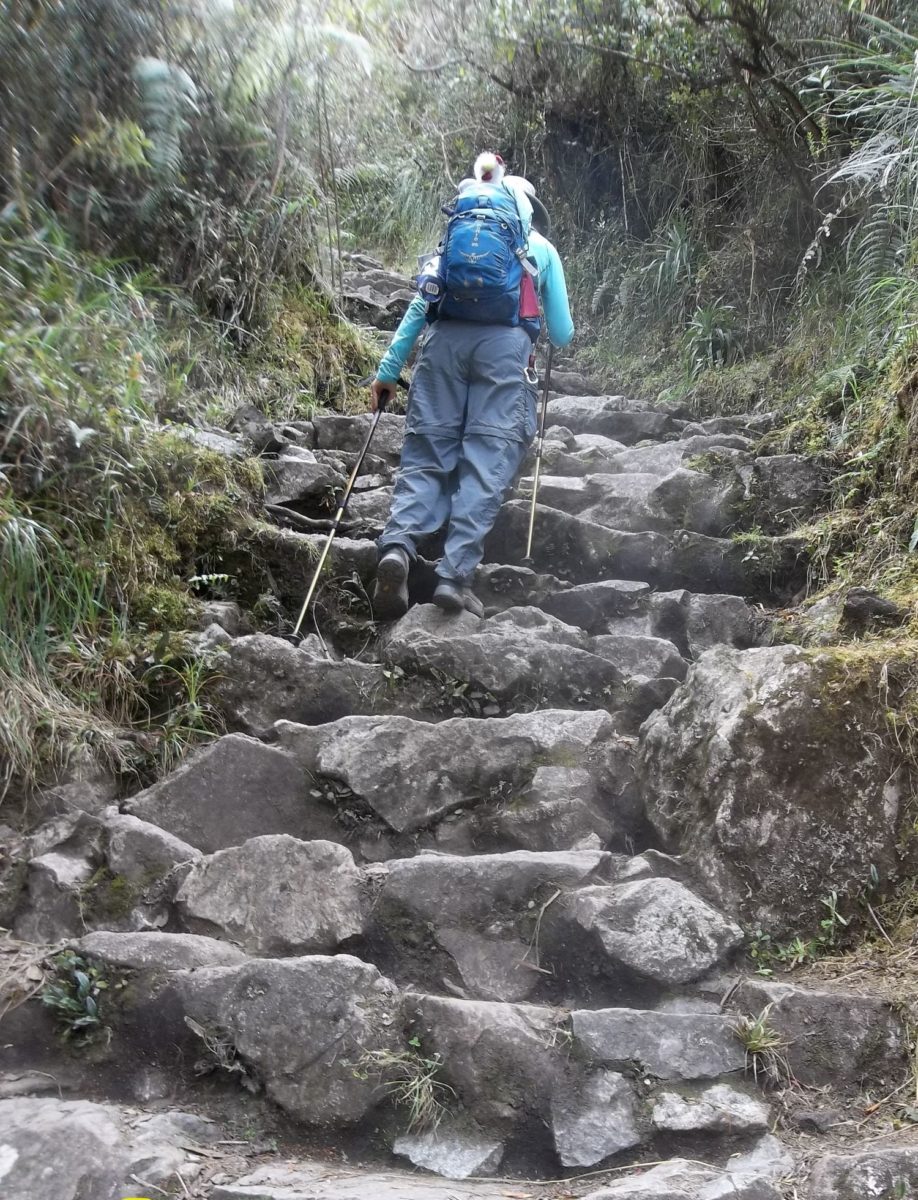
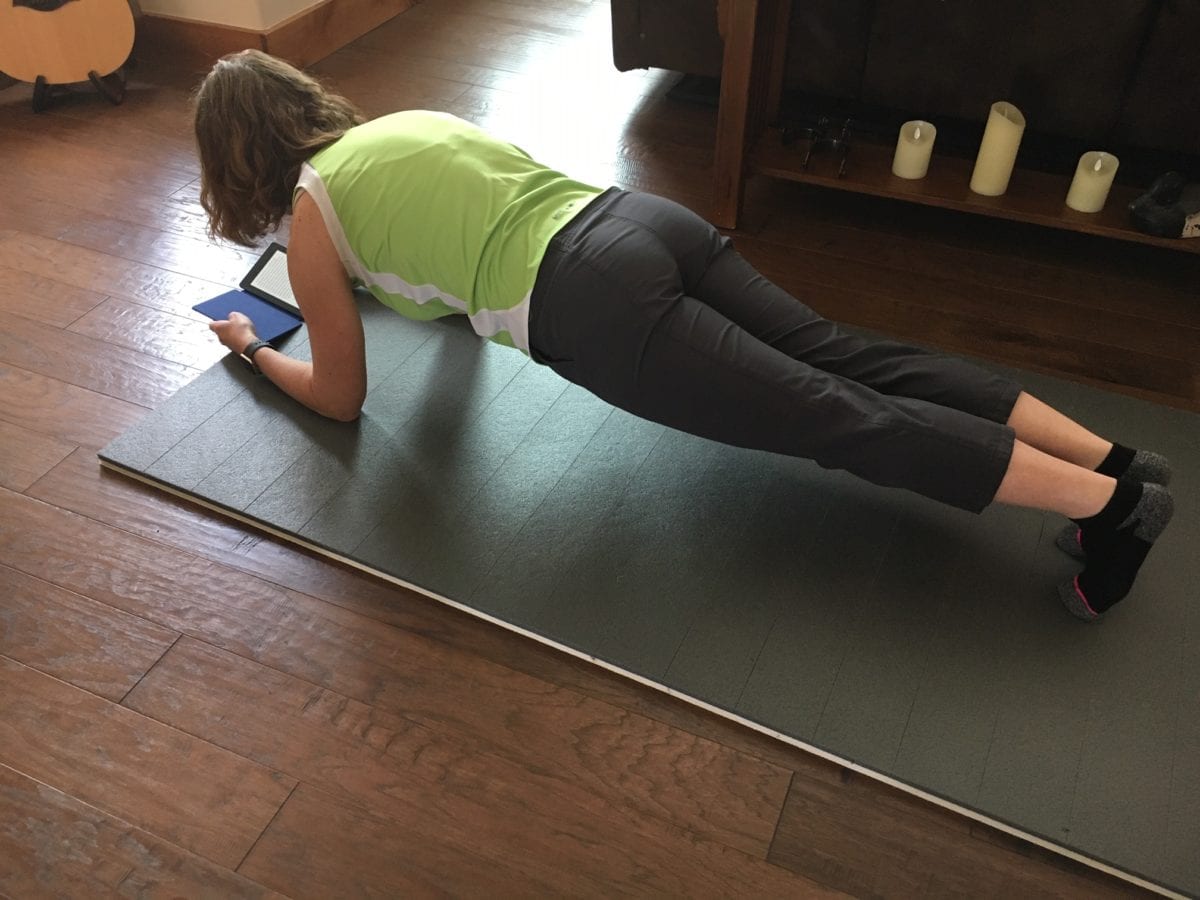
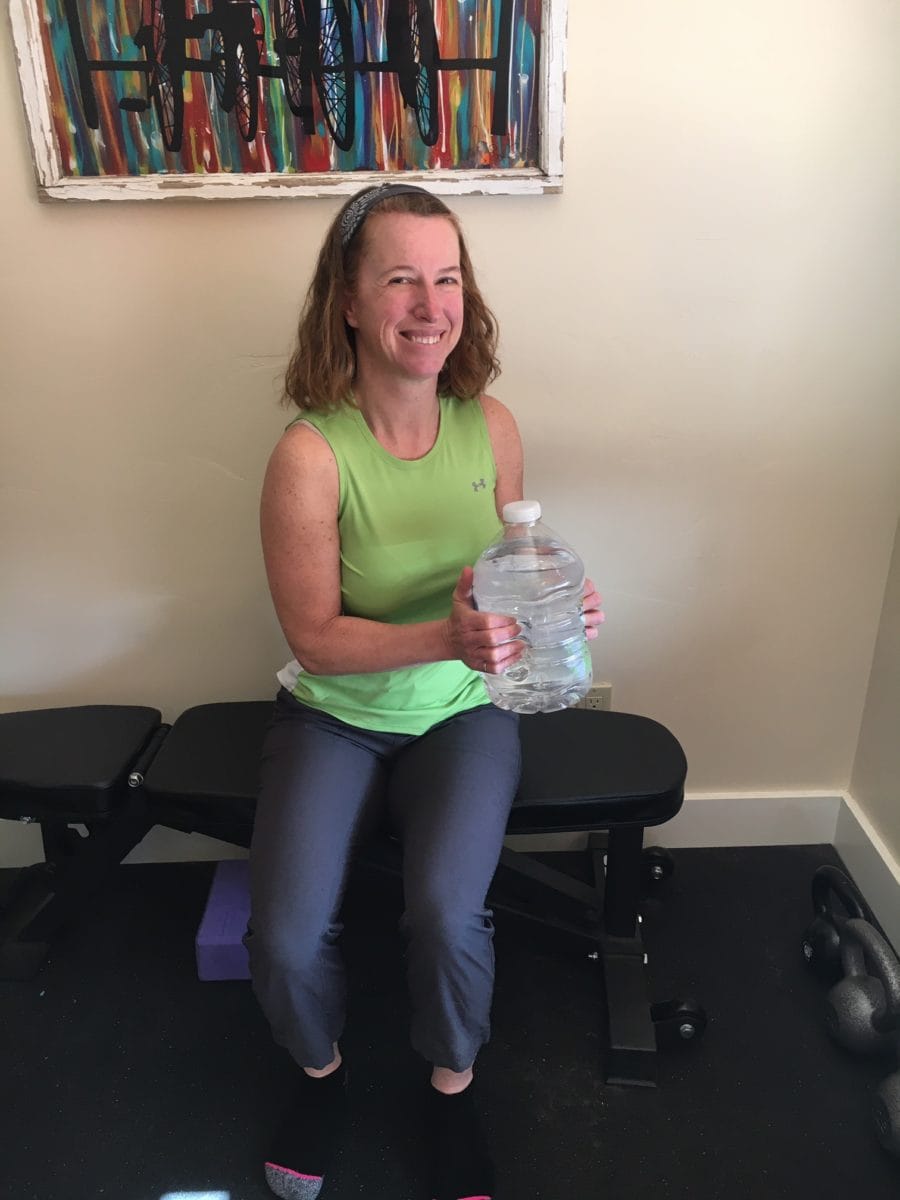

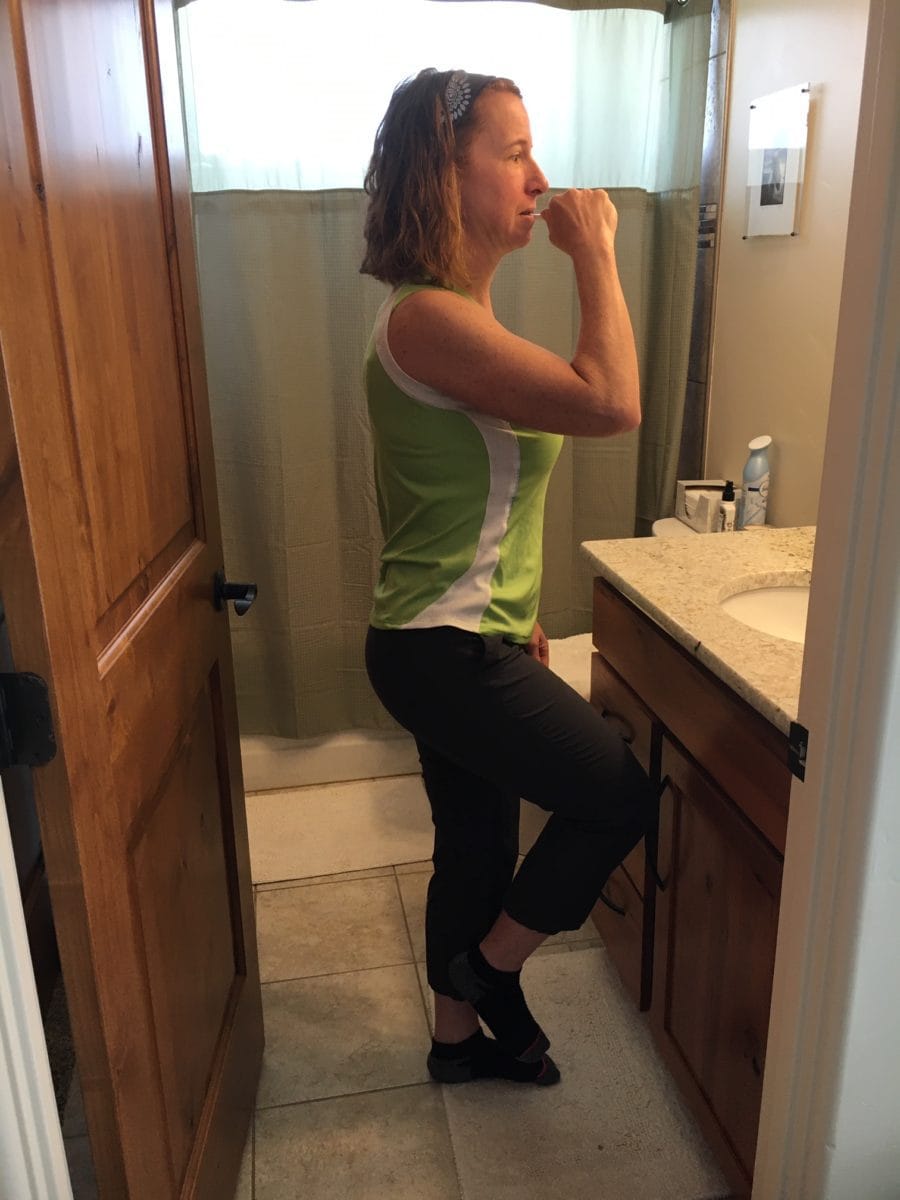



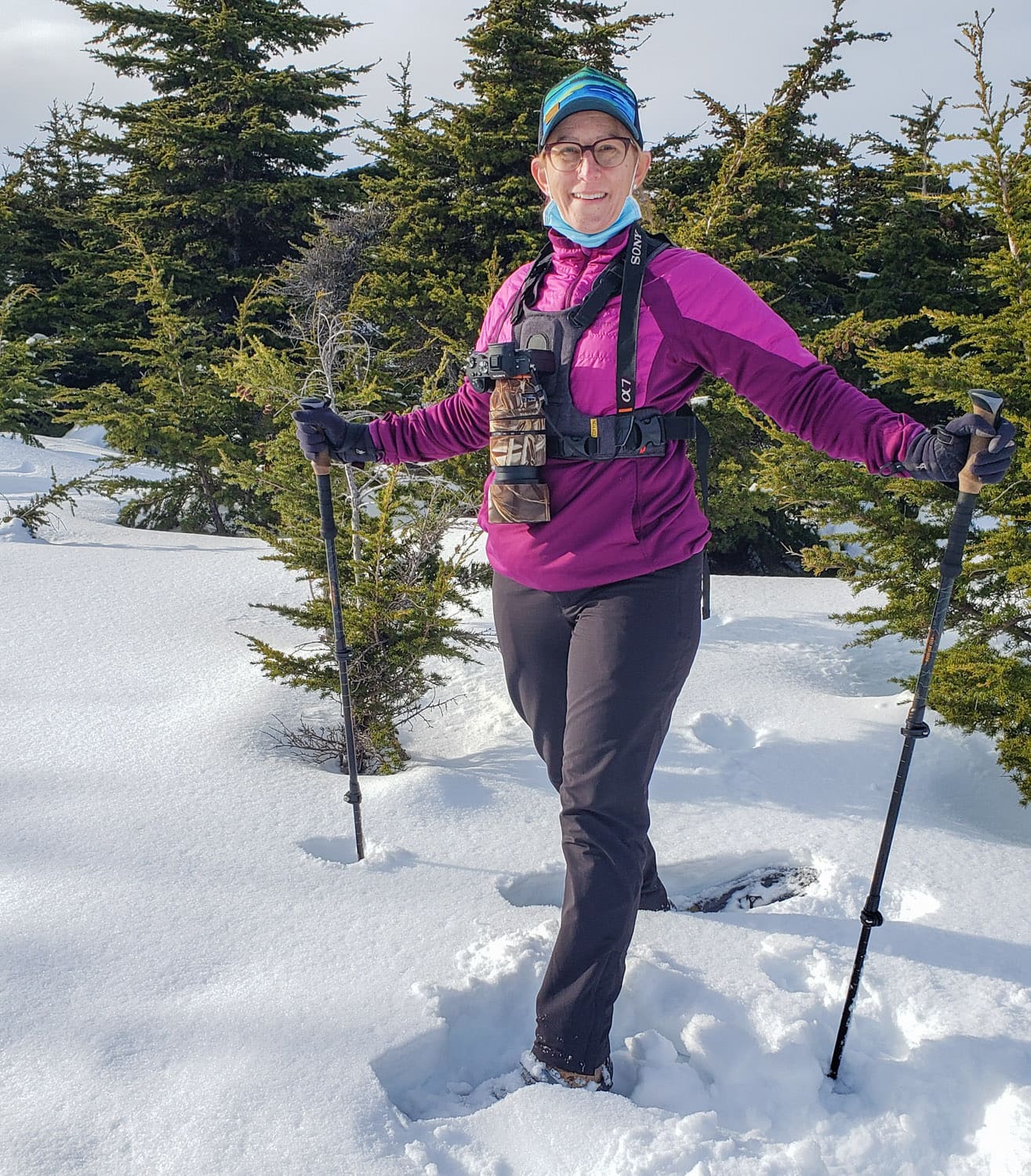


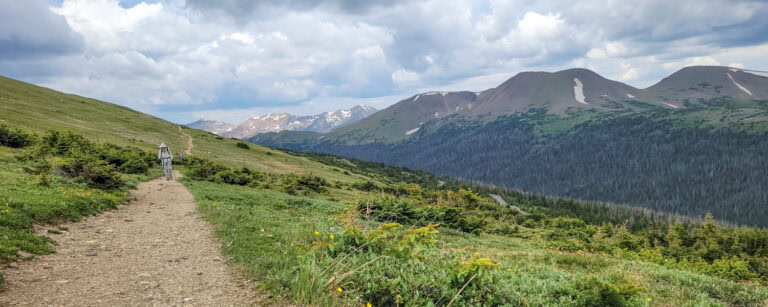



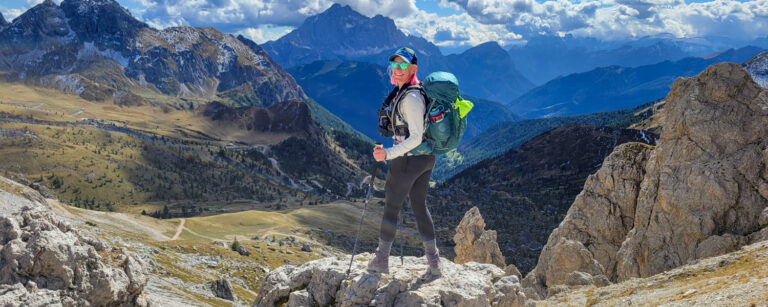
This is awesome and exactly what I was looking for! I plan to do a bucket list long distance hike in a year or two and was wondering how to train for it since it will be my first time. Thank you!
Glad it was helpful to you! Good luck with your training!
Thanks for sharing this; it sounds doable! I used to run/jog many years ago with several 10Ks completed before it all stopped when life got in the way. After gaining a significant amount of weight, I knew I had to get back to moving again, so several yerars ago, I started walking again but have “only” done some 5Ks long with some walking challenges [like 100 miles in 1oo days. But I’d love to start walking further later this year, maybe by mid-summer. Perhaps I’ll be able to walk a 10K after losing more weight!
Would you apply this same training to hiking Utah’s Might 5 parks for 11 days with several hikes a day (probably totaling 5-10miles per day)? I’m not finding anything on the internet about training for these parks specifically. I want to add that I’m currently doing 2 mile walks and 2-4 mile hikes every other day of the week. Also, I’m paddle boarding 1x a week (usually Saturdays) for several hours, which uses a lot of upper body, arms, and core.
Yes – I think this training would apply for any kind of hiking you want to do – especially in Utah!
Thank you for this, it’s very helpful and manageable! I’m in training to walk the Tour du Mont Blanc in the summer which has 15-20k day hikes with c.700m ascent each day. I’m interested that you suggest short regular walks in your 6 week training schedule for a 30mile hike over 3 days. Do you think this is more beneficial than longer hikes akin to the 10 mils/day you’re aiming at? Thanks!